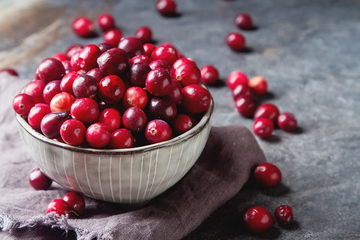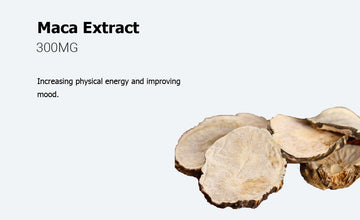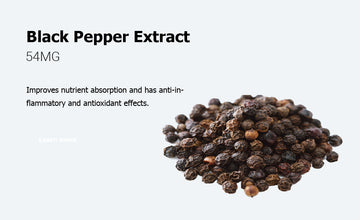Cranberries (Vaccinium macrocarpon) are more than just a tart holiday staple—they’re a powerhouse of bioactive compounds with scientifically proven health benefits. From supporting urinary tract health to offering antioxidant and anti-inflammatory effects, cranberries have earned their reputation as a functional superfood. In this blog, we’ll explore the science behind cranberries and why they deserve a place in your daily wellness routine.
Cranberries and Urinary Tract Health: A Well-Researched Benefit
- Cranberries are perhaps best known for their role in preventing urinary tract infections (UTIs), which affect millions annually, particularly women. The mechanism lies in their unique proanthocyanidins (PACs), specifically A-type PACs, which inhibit the adhesion of pathogenic bacteria (like E. coli) to the bladder and urinary tract walls(1)
- Clinical Evidence: A meta-analysis of randomized controlled trials found that cranberry consumption reduced UTI risk by 26% in healthy women and 50% in recurrent UTI sufferers (2).
- Dosage Matters: Research suggests 36–72 mg of PACs daily (equivalent to ~8–16 oz of cranberry juice or 400–500 mg of standardized extract) is effective for prophylaxis (3).
- Unlike antibiotics, cranberries offer a non-antibiotic approach to UTI prevention, reducing the risk of bacterial resistance—a growing global health concern (4).
Beyond UTIs: Antioxidant and Anti-Inflammatory Effects
- Cranberries are rich in polyphenols, including flavonoids (quercetin, myricetin) and phenolic acids, which combat oxidative stress and inflammation—key drivers of chronic diseases (5).
- ORAC Score: Cranberries rank among the top antioxidant-rich fruits, with an ORAC (Oxygen Radical Absorbance Capacity) value of 9,090 units per 100g, surpassing blueberries and apples (6).
- Heart Health: Regular intake is linked to improved HDL cholesterol,reduced LDL oxidation, and lower blood pressure, likely due to enhanced endothelial function (7).
Gut Microbiome Support
- Emerging research highlights cranberries’ prebiotic-like effects. Their polyphenols modulate gut microbiota, promoting beneficial Bifidobacteria while inhibiting pathogens like H. pylori (associated with stomach ulcers) (8).
- A 2021 study in Gut Microbes showed cranberry extract increased microbial diversity, a marker of gut health (9).
Practical Ways to Incorporate Cranberries
To reap the benefits:
- Choose Unsweetened Forms: Avoid juices with added sugars. Opt for pure juice, dried (unsweetened), or capsules with standardized PAC content.
- Pair with Vitamin C: Enhances PAC absorption and urinary acidity, further deterring bacterial growth (10).
- From UTIs to oxidative stress, cranberries offer a multitargeted approach to health backed by decades of research. Whether you’re prone to infections or simply seeking a nutrient-dense antioxidant boost, this vibrant berry is a smart addition to your wellness toolkit.
References
1.Howell et al. (2005). Journal of Medicinal Food.
2.Wang et al. (2012). Archives of Internal Medicine.
3.EFSA Journal (2014).
4.Sánchez-Patán et al. (2015). Gut Microbes.
5.Basu et al. (2011). Journal of Nutrition.
6.USDA ORAC Database (2010).
7.Dohadwala et al. (2011). American Journal of Clinical Nutrition.
8.Blumberg et al. (2013). Advances in Nutrition.
9.Rodríguez-Morató et al. (2021). Gut Microbes.
10.Foo et al. (2000). Phytochemistry.













